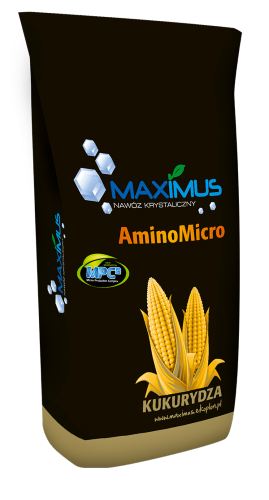Stress in plants
A few words about stress in plants - about preventing stress and limiting its effects.
This year's spring brought severe stress to the field crops due to the changing and difficult field conditions. First, there was a deep water deficit, low temperatures and frequent frosts, and then rains (downpours in some places), combined with relatively low temperatures. These conditions, although not as extreme as what we may encounter in March, April and May, are a characteristic feature of our climate zone.
Stress is a physiological reaction to conditions unfavorable for growth and development. In this sense, stress is notorious in arable fields because field conditions are rarely ideal for a given species. Nevertheless, we do not usually treat situations slightly deviating from optimal for plant growth and development as stressful, and only significant anomalies fit into the definition cited above.
The plant, like any living organism, responds to stress through a series of defense reactions encoded in its genotype, which is the heritage of its origin and growth in a specific climate zone. Crop plants, which by their nature have the proportions of their individual organs changed, because they were bred to generate high yields, usually have a lower threshold of resistance to environmental stress than their ancestor plants. Thus, the first response of plants to stress is to limit production in favor of returning to the "primal survival instincts" (the word "instinct" is used figuratively here since plants do not use it as such). The plant genotype includes metabolic pathways that should be triggered in the event of stress, but they are extremely energy-demanding for the plant and, as a rule, their functioning switches the plant's entire metabolism into defensive mode, practically reducing the yield production to a minimum. Long-term stress of any kind may ultimately lead to a complete failure of the crop, which can be best observed in fields subject to long-term drought (an intermediate seed is then bound in the ear, which germinates but does not represent an economic value). Another mechanism of limiting the negative effects of stress by plants is the accumulation of low-molecular substances in cells. In a situation of a threat to the proper functioning of the body, such treatment allows plants to maintain the cell (the basic building block) in optimal hydration and concentration of cell sap, which will allow the cell to survive a period of stress (most stress comes down to the level of water stress). After the stress is gone, the cell can continue to function and fulfill its role in the plant without any problems.
So the last, most important question remains - what can we as growers do to reduce the effects of stress?
From the standpoint of plant physiology, we should act in support of what nature has developed over thousands of years of evolution and what is its best defense mechanism. Here, proper, balanced and properly conducted fertilization comes to the fore. Nitrogen, which of course is needed, but as such reduces the stress tolerance of plants, not only in large amounts (especially related to low and high temperatures). This fertilization should be comprehensive, providing the plant with access to all nutrients throughout the growing season, both macro- and micronutrients. In virtually every case, enzymatic reactions and physiological pathways triggered during a period of stress need one of the micronutrients to function, so remember to fertilize them from early spring. Comprehensive nutrition will be the first step to a quick natural response of the plant to the emerging stress and at the same time a quick return to the optimal (from the grower's point of view) crop production paths. An excellent solution is complex micronutrient fertilizers from the MAXIMUS AminoMicro series, which in such conditions should be applied in the higher of the recommended doses - 1 kg/ha.
However, it may not be enough. Amino acids can help here. This function is perfectly fulfilled by low-molecular amino acids from the beginning of the homologous series - glycine, proline and their derivatives. Administering these compounds before the onset and intensification of stress reduces the amount of energy spent on their production (the plant gets a ready solution), allows them to be quickly taken in and transported to their destination, where they can immediately fulfill their physiological function, and after the stress has subsided, they accelerate regeneration in plants by minimizing the negative effects of severe stress. Recommended solutions here include MAXIMUS AminoMicro at a dose of 1 kg/ha (where glycine is a carrier of micronutrients) and MAXIMUS Amino Antystres at a dose of 1 kg/ha (typical amino acid fertilizer).
Products recommended for use in the issue in question:
please click on the product for details.
MAXIMUS Amino Antystres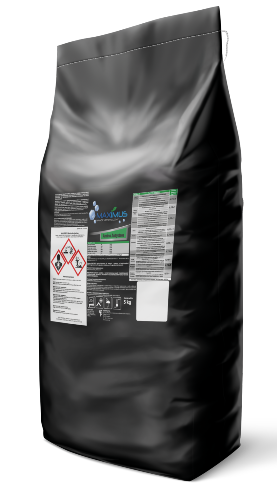 MAXIMUS AminoMicro Universal
MAXIMUS AminoMicro Universal 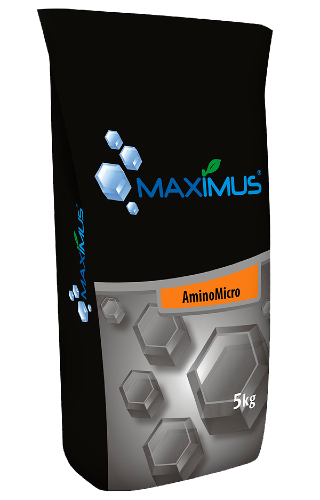 MAXIMUS AminoMicro Cereals
MAXIMUS AminoMicro Cereals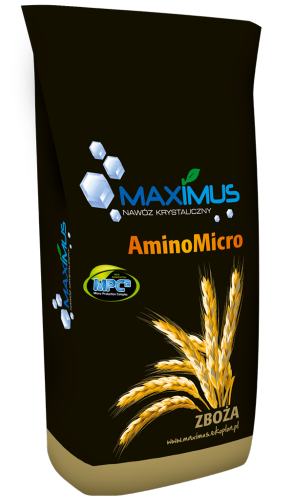
MAXIMUS AminoMicro Rapeseedseed/Beetroot 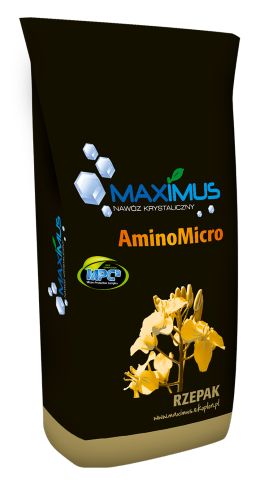 MAXIMUS AminoMicro Maize/Potato
MAXIMUS AminoMicro Maize/Potato